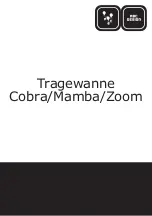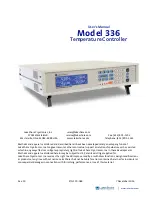
MX31 Cab, MX31FU Radio Cab Page 19
marker in the SWI mode display), the name entered is used for the consist (or switch ladder). From
SW-Version 1.20.
NOTE: Names containing up to 7 letters are displayed in large font as an active address, with me-
dium font if longer; 12 characters is the maximum that fits in one row but it is possible to use
names with up to 24 characters.
♦
E-procedure
M/D
(press E + 7) – selects between permanent and temporary function key ac-
tuation of the active LOCO or SWI address; selection for this address remains stored in the system
even after address gets deactivated.
After entering this E-procedure, use the function keys to be changed
to toggle between temporary or permanent actuation; the LED’s
above the keys indicate the selection made: green for permanent and
red for momentary action.
All function keys by default are set to permanent action except for F9,
which is set to momentary because there is no indicator-LED avail-
able in the MX31 cab.
♦
E-procedure
RÜB
(press E + 8) – defines the recall memory depth, separate for the LOCO and
SWI memory (for the mode this E-procedure was started from).
Every single address (as well as consist) is stored in the recall mem-
ory after its deactivation, from where it can be re-activated (in the
tabular address display or by directly rotating through the memory
with the F or W key). The recall memory holds 10 addresses by de-
fault. Once the memory is full, the oldest entry is dropped with every
new address added to the memory. The memory size can be
changed with the E-procedure RÜB to hold between 1 and 30 ad-
dresses.
♦
E-procedure
OS
(press E + U) – shortcut to enter the area of operating sequences (can also be
reached using the menus), to define new or actuate stored switch ladders, automatic operating se-
quences (AOS), automatic routing sequences (ARS) and similar features to be introduced in the
future. Also see chapter about operating sequences!
♦
E-Procedure
STU
(press E + 0) – Selects between 14, 28 or 128 speed steps.
28 speed steps are set by default, which means that decoders set to
28 or 128 speed steps are functioning properly. Not so with decoder
set to 14 speed steps (mostly older decoders or LGB; the incompati-
bility is usually recognizable by the flashing head lights).
To take full advantage of modern decoders (128 speed steps) set the
cab to 128 steps as well (for each single address with this procedure
or for all addresses via the menu).
Содержание MX31FU
Страница 6: ...Page 6 MX31 Cab MX31FU Radio Cab 4 QUICK GUIDE...
Страница 7: ...MX31 Cab MX31FU Radio Cab Page 7...
Страница 29: ...MX31 Cab MX31FU Radio Cab Page 29...









































